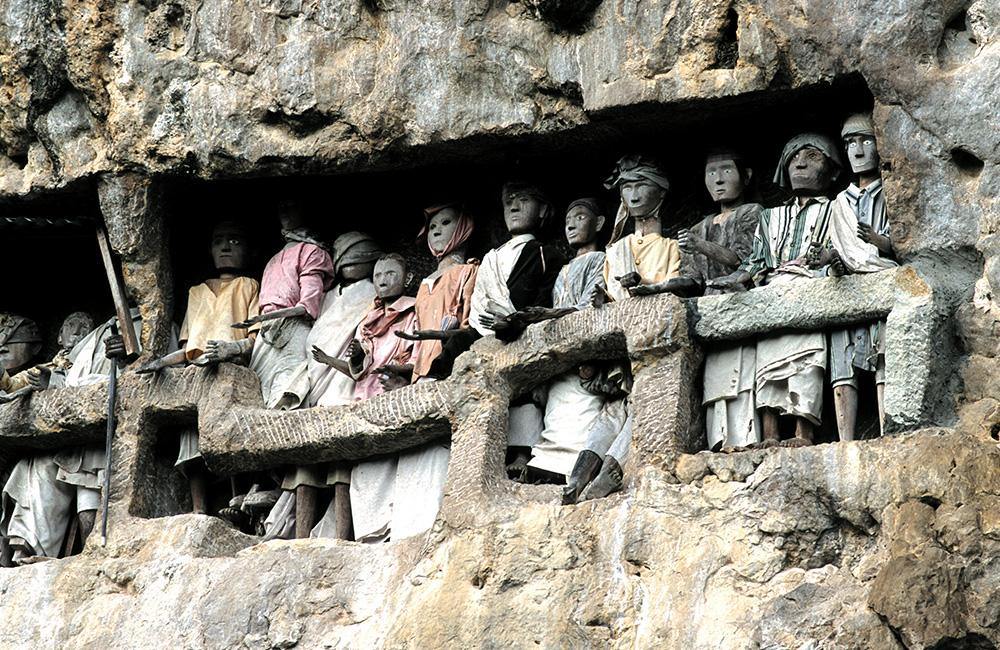First published: Winter 2005
The Toraja way of death is a fascinating mix of ritual, custom and spectacle. For the Toraja, the dead are as much a part of society as the living. At Lemo, cliffs rise precipitously from the rice fields like stonework condominiums. Crypts, carved with prodigious manual labour, high into the solid rock, house the mortal remains of Toraja nobility. Set among the crypts, the striking tau tau, life-size wooden effigies representing the deceased, look impassively on the world below. Tau means ‘man’ and tau tau ‘men’ or ‘statue’.

Of the 300,000 Toraja, a tribal people who live in Torajaland, a mountainous area on the island of Sulawesi in Indonesia, about 100,000 continue to follow the ‘way of the Ancestors’. The precise name for their homeland is Tana Toraja. The Toraja believe that they can take possessions with them to the afterlife, and the dead generally go well equipped to their grave. Since this led to grave plundering, the Toraja started to hide their dead in caves or niches hewn out of rock faces. These caves were hollowed out by specialist cave builders who were traditionally paid in buffalo, and since the building of a cave would cost several buffalo, only the rich could afford it. Although the exterior of a cave looks small, the interior is large enough to entomb an entire family. Coffins go deep inside the caves, while the tau tau look down from their balconies in the rock face.
This is an article extract; read the full article in Raw Vision #53




